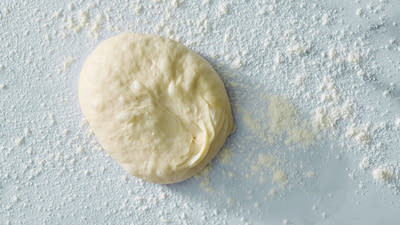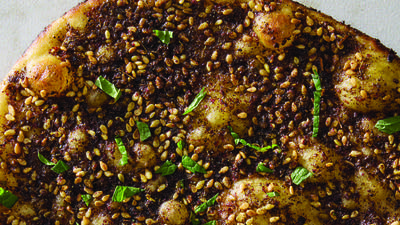
Trevor Corson, author of The Story of Sushi, explains why you should eat nigiri with your fingers, why you should ignore the extra wasabi and how to get sushi chefs to give you the best fish.
Pati Jinich: You can get a tray of sushi in a gas station these days just as you would a box of donuts. Why has sushi gone so mainstream?
 Trevor Corson (Curt Richter)
Trevor Corson (Curt Richter)
Trevor Corson: This is the hilarious mystery of how this insanely exotic meal of raw fish has become as common as McDonald's in the U.S. It's really an all-American meal now. It just seems to have happened with no one noticing.
Part of it is that starting even in the late 70s, people's awareness of the healthfulness of the food they were eating became more pronounced. Fish and grains were even recommended in 1977, and that was about the same time sushi entered into our American palate.
But the sad thing is that our sushi has become this mix of stuff where we put in spicy chili pepper, mayonnaise, extra wasabi and all these other things that prevent you actually from tasting the fish. It's a bit ironic and a bit of a shame that we're eating so much fish, and yet we're not really paying any attention anymore to the taste of the fish. It’s more about that melts-in-your-mouth succulence and all the sauces and everything. I encourage people to try more traditional sushi just so they can taste the fish again.
PJ: I haven't seen many sushi chefs who are women behind the counter.
TC: It goes back to the patriarchy that is so persistent in Japanese society. It's really hard for women to enter the sushi profession in Japan. There are all these ridiculously stupid reasons that are given like their hands are too hot and they are going to cook the fish.
PJ: Aren't women's hands actually colder? At least mine are cold.
TC: I found this scientific study that proved that men's hands are warmer. It's very challenging for women, but I think they have a better chance outside of Japan right now than they do in Japan. But that may change -- let's hope so.
PJ: I'm one of those people who has never mastered chopsticks -- I just don't have the patience. I always eat sushi with my fingers. What's the etiquette?
 The Story of Sushi
The Story of Sushi
TC: You are so much in luck because the best way I think to eat sushi is with your fingers, and there's actually a very specific reason for that. When you sit at the sushi bar and the chef makes you what's called a nigiri -- that's the little finger of rice with a slice of something on top, the traditional form -- it is meant to be actually quite loose, not packed too tightly. They fall apart in your mouth that way.
Chefs go through years of training to achieve the perfect amount of pressure with their fingers when they squeeze it -- just enough so the perimeter of the rice grains sticks together, but the inside of the rice pack is still loose and airy. You want that to be loose and airy so when you put it in your mouth, the rice grains fall apart and mingle with the fish on your tongue.
Most sushi diners in the U.S. have never experienced a properly made nigiri because we all think we're supposed to use chopsticks. The chefs are all packing the sushi much too tightly so it won't fall apart when we try to pick it up with chopsticks.
PJ: What are we supposed to do with wasabi? Are we supposed to mix it with the soy sauce, use it whenever we feel like it?
TC: Here is the cruel truth: We're always served extra wasabi on the side -- even at the lower-end sushi restaurants in Japan, this is the case -- but it's not supposed to be there.
After I have gotten to know sushi chefs and chatted with them in Japanese, they finally loosen up and tell me the truth. When they see us mixing extra wasabi into our soy sauce, they stop giving us their best fish, because we're not going to be able to taste the difference with all the spiciness in there. They're going to save the best fish for somebody else.
A good sushi chef is actually putting a little bit of wasabi into the piece of sushi when he makes it. He's actually calibrating the amount of wasabi to that particular fish. There shouldn't be any more or any less -- any more is usually going to overwhelm the very delicate flavors of some of these fish.
My recommendation is sit at the bar, tell the chef that you're not going to add extra wasabi and could he please season the sushi for you the way he wants and you'll just eat it like that. A good chef will paint a little sheen of sauce with a brush across the top of the piece of sushi and maybe add a little garnish and give it to you. You don't have to do anything else to it. That's the ideal way to eat sushi, just put it right in your mouth.
PJ: I've seen sushi chefs brush that magic sauce on top of sushi. What is in that sauce?
TC: Here's another thing we don't know: Straight soy sauce is really too strong of a flavor for most of the delicate fish in sushi. Any sushi chef who is good is making their own house-brewed sauce. It's called nikiri and it is a proprietary mix of soy sauce but also a few other things: usually some dashi broth, which is made from simmered kelp and fish flakes, maybe some sake, maybe a secret ingredient. It calms down the soy sauce and makes it less intense, less salty, and more complex. That's actually a much better match. You only need a little bit of it.
Some chefs cut little notches or nicks in the top of the fish before they put it on the rice. That's actually another calibration of flavor. They're doing that to hold more or less sauce on top of the nigiri before they hand it to you.
Before you go...
Each week, The Splendid Table brings you stories that expand your world view, inspire you to try something new, and show how food connects us all. We rely on your generous support. For as little as $5 a month, you can have a lasting impact on The Splendid Table. And, when you donate, you’ll join a community of like-minded individuals who love good food, good conversation, and kitchen companionship. Show your love for The Splendid Table with a gift today.
Thank you for your support.
Donate today for as little as $5.00 a month. Your gift only takes a few minutes and has a lasting impact on The Splendid Table and you'll be welcomed into The Splendid Table Co-op.




